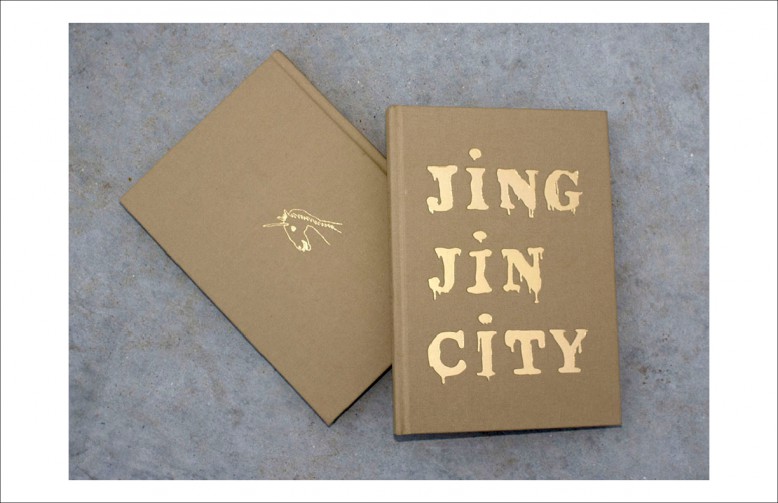
Artist and photographer Andi Schmied ventured to a time that land forgot for this photo series, travelling to the inhabited luxury town Jin Jing, just 100 miles from Beijing, China. The city’s four thousand grandiose villas exist in various stages of incompletion, guarded only by a small army of gardeners and guards who also act as the city’s only permanent inhabitants. “Jing Jin City shows how the lack of defined structures lets people interact differently with their environment,” says Schmied, who on his visits to Jin Jing built installations out of unused construction materials with artist Lawrence Lek. Schön! Speaks to the photographer about the failed utopia and its state of constant renewal.
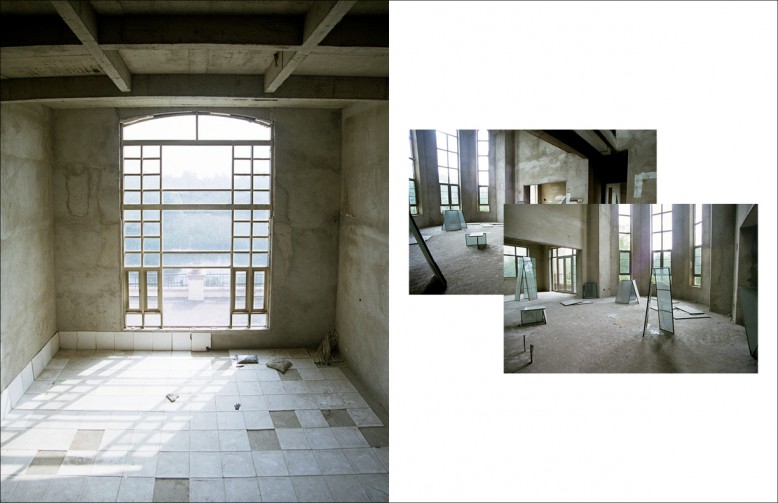
What was it that first drew your attention to Jing Jin City?
What I found special about Jing Jin City was that it is not really a ghost town. Because it was built as a luxury resort, the developers are still obliged to maintain facilities for the few wealthy people who actually bought a mansion. For example, each gated community has a guard at its entrance – even if only one of the seventy villas has been sold. All over the city, gardeners spend every season cutting the grass back. The workers maintain the illusion that the city is functioning as planned. I found this process fascinating, and still do.
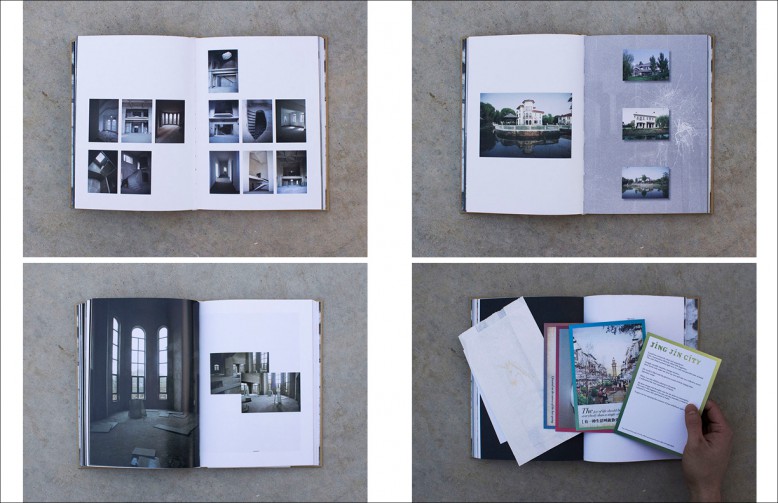
What did you want to achieve by adding your installations to the city?
Adding my installations was simply an exaggeration of the processes already going on in the city. The guards and gardeners have to find some means of occupying themselves after work, and many spend their time modifying the environment. They build beds and sleep in some of the villas, while in others they build domestic farms, with sheep on the balcony and feeding troughs in the living room. In all of the mansions I entered, there was some sign of life going on. But not in the way it was originally intended. The installations are just a continuation of this process. They could have been built by any of the guards, gardeners, caretakers, or builders. After all, the caretakers are the real residents of the city, and I just mimic their actions, experimenting with how far this state of interaction can go.
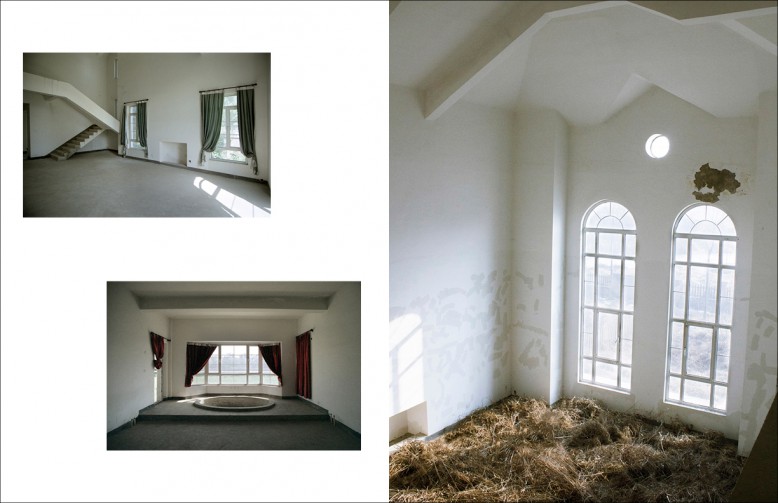
Did you speak to any of the guards during your visits?
Nobody spoke English. I could only communicate with other people when I was near Wifi and I could use BAIDU translate [the Chinese equivalent of Google translate, which is banned in China]. The hotel porters were my only sources of information. They shared their personal stories; they were all from the surrounding area and in Jing Jin they found well-paid work that isn’t too hard. They said that the grand Hyatt Regency hotel is mainly used for corporate conferences, because the prices are more affordable but the standards are exactly the same as for any other Hyatt.
The estate agent was the only one who tried to convince me that Jing Jin City is prospering. I pretended that I was planning to buy a house, and he said that the houses are only empty because demand is so high that the owners do not want to sell them yet.
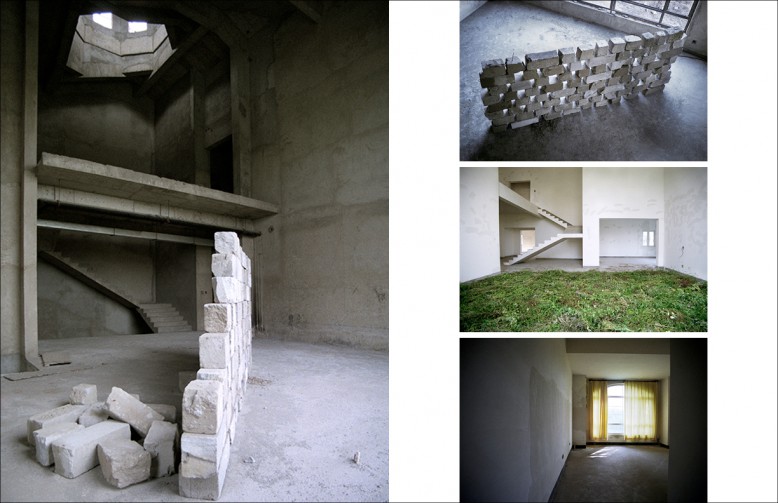
With Beijing’s rapidly growing population, why do you think Jing Jin and its luxury accommodation has remained mainly unpopulated?
Jing Jin City was meant to be sold to very wealthy Chinese people from Beijing. Everything has a grand name: Triumphal Arch, Heavenly Driving, High-End District, Premium Model Villas. But it’s just a bit too far to commute, a bit too empty to enjoy, and a bit too incomplete to boast about. There’s no railway nearby either. These practical considerations are probably why it’s still unpopulated. Also, people who can afford to live in such an environment probably do not want to live surrounded by thousands of the exact same villas. It just loses any sense of exclusivity. That is what the developers did not understand when they imagined all these wealthy families living together.
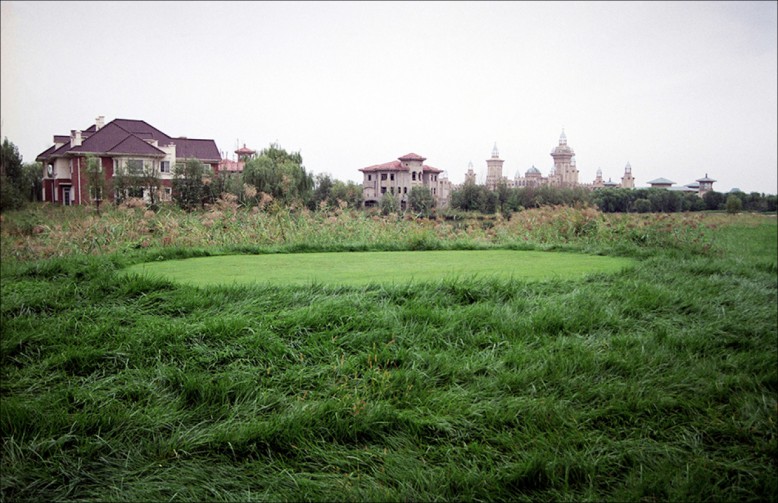
Do you think that one day Jing Jin will be inhabited?
It will probably never be completed or inhabited. They built the city for a non-existent demand. They can’t fill it up gradually because no wealthy person would want to move into an environment that’s under construction. In a sense, Jing Jin City’s state of relative emptiness has allowed it to find its own path. I’m not fetishistic about the incomplete or ruined state of the city. However, I find it fascinating to observe a completely unique city – one where all the facilities (empty mansions, leftover construction materials), all the money (stable salaries) and all the free time (8-10 hours shifts but not much to do) exists for its own workers.
Photobook Jin Jing City is available to purchase on the photographer’s website.
Words / Molly Taylor
Follow her on Twitter.
Discover the latest issue of Schön!.
Now available in print, as an ebook, online and on any mobile device.












